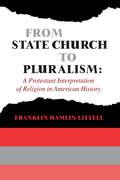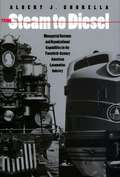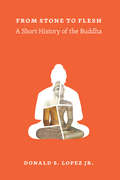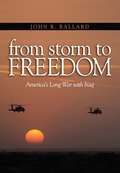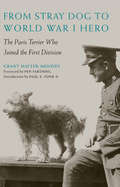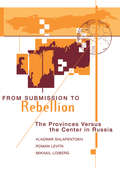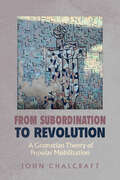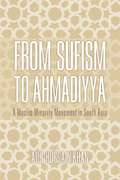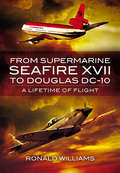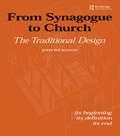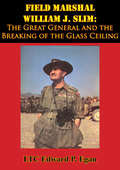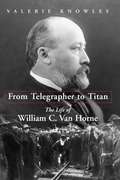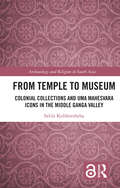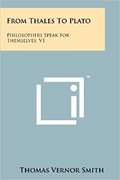- Table View
- List View
From Stalinism to Pluralism: A Documentary History of Eastern Europe Since 1945 (Second Edition)
by Gale StokesA selection of readings and plenty of commentary make this history an enjoyable book to read.
From Stardust to First Cells: The Origin and Evolution of Early Life
by Sankar ChatterjeeThis book presents a groundbreaking hypothesis to answer one of the greatest scientific mysteries: How did life begin? Like a detective piecing together seemingly disparate bits of evidence, Dr. Sankar Chatterjee combines the most recent discoveries in cosmology, geology, chemistry, information systems, and biology, weaving a vast tapestry from the threads of current research. Dr. Chatterjee convincingly argues that the odyssey of life first began when the fundamental building blocks were brought to Earth by meteorites. These cosmic compounds concentrated and simmered like a soup in hydrothermal crater-caldrons. Through a system of subterranean vent networks, a biosynthetic-rich variety of organic compounds mixed and matched into a recipe of rich biomolecules guided by prebiotic information systems. Through symbiosis, these complex biopolymers gradually assemble into membrane-bound protocells. At each stage of this evolutionary progression, through natural selection, they refined with increasing stability and complexity, ultimately leading to the emergence of the first cells about four billion years ago. In this book, Dr. Chatterjee tells this story in rigorous detail in language that is both accessible and engaging.
From State Church to Pluralism: A Protestant Interpretation of Religion in American History
by Franklin LittellFor most of our history, American religious life has been dominated by a view of church history in which we appear as mere deposits of European religious culture. In fact, however, the freedom of Americans to choose without penalty to join any religious body or none at all is new in human history. This book is an effort to understand and interpret how we arrived at our present situation and, in doing so, to clarify many cultural, social and political issues.
From Steam to Diesel: Managerial Customs and Organizational Capabilities in the Twentieth-Century American Locomotive Industry (Princeton Studies in Business and Technology)
by Albert ChurellaThis overview of the leading locomotive producers in the United States during the twentieth century shows how they responded to a radical technological change: the replacement of steam locomotives by diesels. The locomotive industry provides a valuable case study of business practices and dramatic shifts in innovation patterns, since two companies--General Motors and General Electric--that had no traditional ties to locomotive production demolished established steam locomotive manufacturers. Albert Churella uses many previously untapped sources to illustrate how producers responded to technological change, particularly between the 1920s and the 1960s. Companies discussed include the American Locomotive Company (ALCo), the Baldwin Locomotive Works, the Lima Locomotive Works, Fairbanks-Morse, the Electro-Motive Division of General Motors, and General Electric.A comparative work of business history and the history of technology, the book is not a complete history of any locomotive builder, nor does it explore the origins of the diesel engine in great detail. What it does, and does superbly, is to demonstrate how managers addressed radical shifts in technology and production methods. Churella reveals that managerial culture and corporate organizational routines, more than technological competency per se, allowed some companies to succeed, yet constrained the actions of others. He details the shift from small-batch custom manufacturing techniques in the steam locomotive industry to mass-production methods in the diesel locomotive industry. He also explains that chance events and fortuitous technological linkages helped to shape competitive patterns in the locomotive industry.
From Steel to Slots: Casino Capitalism in the Postindustrial City
by Chloe E. TaftBethlehem PA was synonymous with steel. But after the factories closed, the city bet its future on casino gambling. Chloe Taft describes a city struggling to make sense of the ways global capitalism transforms jobs, landscapes, and identities. While residents often have few cards to play, the shape economic progress takes is not inevitable.
From Stone to Flesh: A Short History of the Buddha
by Donald S. LopezThis is a book about the Buddha before he was the Buddha. How was he portrayed before he became the pacific and positive figure so familiar and beloved today?
From Stone to Flesh: A Short History of the Buddha (Buddhism And Modernity Ser.)
by Donald S. Lopez Jr.We have come to admire Buddhism for being profound but accessible, as much a lifestyle as a religion. The credit for creating Buddhism goes to the Buddha, a figure widely respected across the Western world for his philosophical insight, his teachings of nonviolence, and his practice of meditation. But who was this Buddha, and how did he become the Buddha we know and love today? Leading historian of Buddhism Donald S. Lopez Jr. tells the story of how various idols carved in stone—variously named Beddou, Codam, Xaca, and Fo—became the man of flesh and blood that we know simply as the Buddha. He reveals that the positive view of the Buddha in Europe and America is rather recent, originating a little more than a hundred and fifty years ago. For centuries, the Buddha was condemned by Western writers as the most dangerous idol of the Orient. He was a demon, the murderer of his mother, a purveyor of idolatry. Lopez provides an engaging history of depictions of the Buddha from classical accounts and medieval stories to the testimonies of European travelers, diplomats, soldiers, and missionaries. He shows that centuries of hostility toward the Buddha changed dramatically in the nineteenth century, when the teachings of the Buddha, having disappeared from India by the fourteenth century, were read by European scholars newly proficient in Asian languages. At the same time, the traditional view of the Buddha persisted in Asia, where he was revered as much for his supernatural powers as for his philosophical insights. From Stone to Flesh follows the twists and turns of these Eastern and Western notions of the Buddha, leading finally to his triumph as the founder of a world religion.
From Storm to Freedom
by John R. BallardCovering both Operation Desert Storm and Operation Iraqi Freedom as two campaigns within a single, if discontinuous, conflict, this book analyzes the strategic interaction between Iraq and the United States from 1990 to 2010 and the key operational decisions that determined the course of the war. The author's assessment of the long war against Iraq includes misunderstandings between government leaders in Iraq and the United States that led initially to war, ineffective UN sanctions, inefficient efforts by the Clinton administration, and uncoordinated actions by the Bush administration that then led to a preemptive strategy, continuation of conventional combat, and the evolution of an Iraqi insurgency.Ballard's thorough examination of these multiple operations within the context of a single conflict provides readers with rare and insightful perspectives on the complexity of modern war and the challenges of operational command. He first identifies the influence of the Vietnam era on the use of U.S. military power and the decision for war in 1990 and then outlines the important factors of Iraqi history and culture that dominated relations between the two nations during the 1980s and 1990s. Subsequent chapters examine the conduct of Desert Storm from the American and Iraqi perspectives and the military, economic, and diplomatic actions of the period between the two conventional campaigns. Final chapters analyze the 2003 offensive on Baghdad, the postwar stabilization operations that began with the failure to transition under the Coalition Provisional Authority, and the eventual implementation of a warfighting strategy that combined new doctrine and a surge of forces to protect the population in a renewed counterinsurgency campaign. A concluding chapter reviews key lessons for the future, including the importance of effective strategic decision making and the operational mindset required to prosecute modern war successfully.
From Stray Dog to World War I Hero: The Paris Terrier Who Joined the First Division
by Pen Farthing Grant Hayter-Menzies Paul E. Funk IIOn the streets of Paris one day in July 1918, an American doughboy, Sgt. Jimmy Donovan, befriended a stray dog that he named Rags. No longer an unwanted street mutt, Rags became the mascot to the entire First Division of the American Expeditionary Force and a friend to the American troops who had crossed the Atlantic to fight. Rags was more than a scruffy face and a wagging tail, however. The little terrier mix was with the division at the crucial battle of Soissons, at the Saint-Mihiel offensive, and finally in the blood-and-mud bath of the Meuse-Argonne, during which he and his guardian were wounded. Despite being surrounded by distraction and danger, Rags learned to carry messages through gunfire, locate broken communications wire for the Signal Corps to repair, and alert soldiers to incoming shells, saving the lives of hundreds of American soldiers. Through it all, he brought inspiration to men with little to hope for, especially in the bitter last days of the war. <p><p> From Stray Dog to World War I Hero covers Rags’s entire life story, from the bomb-filled years of war through his secret journey to the United States that began his second life, one just as filled with drama and heartache. In years of peace, Rags served as a reminder to human survivors of what held men together when pushed past their limits by the horrors of battle.Watch a book trailer.
From Street to Screen: Charles Burnett's Killer of Sheep (Studies in the Cinema of the Black Diaspora)
by Michael T. Martin and David C. WallCharles Burnett's 1977 film, Killer of Sheep is one of the towering classics of African American cinema. As a deliberate counterpoint to popular blaxploitation films of the period, it combines harsh images of the banality of everyday oppression with scenes of lyrical beauty, and depictions of stark realism with flights of comic fancy. From Street to Screen: Charles Burnett's Killer of Sheep is the first book-length collection dedicated to the film and designed to introduce viewers to this still relatively unknown masterpiece. Beginning life as Burnett's master's thesis project in 1973, and shot on a budget of $10,000, Killer of Sheep immediately became a cornerstone of the burgeoning movement in African American film that came to be known variously as the LA School or LA Rebellion. By bringing together a wide variety of material, this volume covers both the politics and aesthetics of the film as well as its deeper social and contextual histories. This expansive and incisive critical companion will serve equally as the perfect starting point and standard reference for all viewers, whether they are already familiar with the film or coming to it for the first time.
From Subjects to Citizens: A Hundred Years of Citizenship in Australia and Canada
by Pierre Boyer Linda Cardinal David HeadonAustralia and Canada are both lively, multicultural societies with British constitutional traditions. Historically, they have faced similar challenges in defining and sustaining citizenship that reach back into a common past.
From Submission to Rebellion: The Provinces Versus the Center in Russia
by Vladimir ShlapentokhWritten in the spirit of comparative and historical analysis, this book addresses the relationship between the center and its provinces—an important issue in any society—using Russia as a case study. The authors investigate the historical stages of Russia's past with a special focus on the postcommunist era, a time when the movement toward regional autonomy (regionalization) is extremely important as a molder of political and economic life. In addition, the book shows how historical traditions, on the one hand, and the new market economy and democratization, on the other, will shape the relationship between the center and provinces in the coming decades.Shlapentokh, Levita, and Loiberg direct their attention not only to factors which shape regionalization, but also to the effects of this process on many different facets of Russian life. They argue that regionalization in Russia, as well as in other countries, is a contradictory process that has both benefits and drawbacks for social and economic progress.The solid research foundation draws from a rich body of sources, including Russian periodicals, statistical yearbooks, work by Russian and Western authors, data gathered in nationwide surveys conducted specifically for this project, and insightful observations made by the authors during their numerous visits to various regions in Russia.
From Subordination to Revolution: A Gramscian Theory of Popular Mobilization
by John ChalcraftAt a time of mass discontent, revolutionary weakness, and right-wing ascendancy, John Chalcraft presents a new theory of popular mobilization. From Subordination to Revolution is based on an innovative reading of the living Gramscian tradition, and it offers an alternative to conservative, liberal, Marxist, and poststructuralist theory. Drawing on examples from across the globe, Chalcraft defines popular mobilization as the many ways in which subordinated groups rearrange their relationships to challenge and overcome domination. The theory sets out a fertile constellation of concepts encompassing the many faces and phases of the long journey from subordination to revolution. This approach breaks ground in connecting the social, structural, spatio-temporal, strategic, and transnational elements of popular mobilization. It also enables Chalcraft to situate anew the fundamental issues of domination, autonomy, consent, and leadership and put forward new arguments about party and bloc. The point is to link together diverse popular struggles in the contemporary world.
From Subprime Loans to Subprime Growth? Evidence for the Euro Area
by Martin Čihák Petya Koeva BrooksA report from the International Monetary Fund.
From Sufism to Ahmadiyya
by Adil Hussain KhanThe Ahmadiyya Muslim community represents the followers of Mirza Ghulam Ahmad (1835-1908), a charismatic leader whose claims of spiritual authority brought him into conflict with most other Muslim leaders of the time. The controversial movement originated in rural India in the latter part of the 19th century and is best known for challenging current conceptions of Islamic orthodoxy. Despite missionary success and expansion throughout the world, particularly in Western Europe, North America, and parts of Africa, Ahmadis have effectively been banned from Pakistan. Adil Hussain Khan traces the origins of Ahmadi Islam from a small Sufi-style brotherhood to a major transnational organization, which many Muslims believe to be beyond the pale of Islam.
From Supermarine Seafire XVII to Douglas DC-10: A Lifetime of Flight
by Ronald WilliamsRon Williams flying career started in the Royal Naval Volunteer Reserve which he joined for his National Service in the 1950s. Having completed this he became a civilian pilot and embarked on a career that would see him flying an amazing variety of aircraft in all parts of the world.His first operational naval aircraft was the Seafire XVII, a direct descendent of the Spitfire. This aircraft was capable of 480 knots, and it was during his first solo flight in one that he very nearly killed himself trying to achieve that speed. Luckily he escaped unharmed but much chastened. Whilst serving with the RNVR he also went solo on the Hawker Sea Fury, the worlds fastest piston engine at that time, and also the jet powered Attacker.Having obtained his civilian pilots licence he commenced flying DC-3s for Cambrian Airways around the UK and Europe. He then moved to a charter airline, Independent Air Travel flying the Vickers Viking, then to BlueAir flying DC-4s to Hong Kong and the Far-East. Next came Airwork based in Adelaide, still on DC-4s. A return to the UK saw him flying the Bristol Freighter from Southend Airport to the near Continent carrying passengers and their cars.Tragedy nearly struck when he was attempting to deliver a Scottish Aviation Twin Pioneer from Southend to the Cape Verde Islands. One of the legs of this flight entailed a stop-over on Fuerteventura, one of the Canary Islands. Having elected to fly at night the small twin-engined aircraft hit bad weather and became lost. Unable to make radio contact and running out of fuel he was forced to ditch into the Atlantic in the eye of a hurricane. A Spanish fishing boat was fortunately to hand and rescued Ron, his co-pilot and single passenger.A move to Eire and Air Lingus followed, captaining Boeing 707s to New York and other American cities. Then came Cathay Pacific flying the Convair 880, British Airways flying BAC 1-11s and finally a twenty year stint with British Caledonian flying DC-10s. This airline was eventually merged with British Airways.This book explains many of the practical and technical aspects of commercial flight and also the pleasurable side of Rons enforced nomadic lifestyle. The story covers commercial flight from its early post-war piston-powered infancy to current airline technology and methods.
From Synagogue to Church: Its Beginning, its Definition, its End (Routledge Jewish Studies Series)
by John WilkinsonThe designs of synagogues and churches are acknowledged to be very alike. But the designers' procedure was confidential, and so far standard explanations have been unsatisfactory. A synagogue should express heavenly values with earthly materials. This combination was in fact expressed in numbers, for, as Plato said, they linked heaven and earth. Scripture described both the Jewish Tabernacle and Temple with a wealth of numbers. Proportions based on these numbers were used to design synagogues. Only a few Jewish documents survive, but they reveal a symbolism, which Christians sometimes repeat. The synagogue sanctuary was designed to contain the 'Holy Ark', and the mosaic floors reveal the point 'Before the Ark' for the prayers and readings. These places faced each other, with the idea that God was facing his people. The synagogue was seen as facing heaven and in church buildings Christians repeated the same proportions. This was a joint tradition among Jews and Christians. It was easy to design, was carried out secretly and accurately, and - without a computer - was extremely hard to unravel. This book, for the first time, does just that.
From Teaching To Practice: General Walter Krueger And The Development Of Joint Operations, 1921-1945
by Major George B. EatonGeneral Walter Krueger commanded the 6th Army in the Southwest Pacific Theater in World War II. As the Commander, 6th Army, he led the troops that liberated New Guinea and the Philippines and he was designated as the commander of the forces scheduled to invade Japan. Krueger's wartime accomplishments were simply a continuation of contributions made to the United States Army and Navy over a 47 year career. Yet, despite his achievements, after the war Krueger simply faded away. Krueger's lack of historical name recognition some 50 years after his greatest achievements deprives current officers and historians not only the knowledge of wartime exploits, but also of significant understanding of the development of joint operations doctrine in the years between World War I and World War II.The current consensus among historians is that the United States Marine Corps was responsible for the development of amphibious operations. While true at the tactical level, this paper demonstrates that the Army and Naval War Colleges and the Army and Navy General Staffs and War Plans Divisions were key players in the development of doctrine at the strategic and operational level. General Walter Krueger attended both war colleges, served on the faculty of both war colleges, and served two tours in the Army War Plans Division, including a two year stint as its Chief. He was on the Joint Board or the Joint Planning Committee for over six years. The intent of this paper is to show Krueger's personal influence in the development of joint doctrine.The paper considers Krueger's assignment history, the war plans he developed, his ideas on unity of command and the need for inter-service understanding, and his principles of war planning. It includes a case study of the Lingayen Gulf Landing in January 1945 to demonstrate the acceptance and rejection of his key ideas. The paper focuses on Army and Navy issues and considers air issues only tangentially.
From Telegrapher to Titan: The Life of William C. Van Horne
by Valerie KnowlesWinner of the 2005 Ottawa Book Award for Non-fiction , the 2005 University of British Columbia Award for Best Canadian Biography, and the Canadian Railroad Historical Association Award for Best Railway Book of the Year. William Van Horne was one of North America’s most accomplished men. Born in Illinois in 1843, he became a prominent railway figure in the United States before coming to Canada in 1881 to become general manager of the fledgling Canadian Pacific Railway. Van Horne pushed through construction of the CPR’s transcontinental line and went on to become company president. He also became one of Canada’s foremost financiers and art collectors, capping his career by opening Cuba’s interior with a railway.
From Temple to Museum: Colonial Collections and Umā Maheśvara Icons in the Middle Ganga Valley (Archaeology and Religion in South Asia)
by Salila KulshreshthaReligious icons have been a contested terrain across the world. Their implications and understanding travel further than the artistic or the aesthetic and inform contemporary preoccupations.This book traces the lives of religious sculptures beyond the moment of their creation. It lays bare their purpose and evolution by contextualising them in their original architectural or ritual setting while also following their displacement. The work examines how these images may have moved during different spates of temple renovation and acquired new identities by being relocated either within sacred precincts or in private collections and museums, art markets or even desecrated and lost. The book highlights contentious issues in Indian archaeology such as renegotiating identities of religious images, reuse and sharing of sacred space by adherents of different faiths, rebuilding of temples and consequent reinvention of these sites. The author also engages with postcolonial debates surrounding history writing and knowledge creation in British India and how colonial archaeology, archival practices, official surveys and institutionalisation of museums has influenced the current understanding of religion, sacred space and religious icons. In doing so it bridges the historiographical divide between the ancient and the modern as well as socio-religious practices and their institutional memory and preservation. Drawn from a wide-ranging and interdisciplinary study of religious sculptures, classical texts, colonial archival records, British travelogues, official correspondences and fieldwork, the book will interest scholars and researchers of history, archaeology, religion, art history, museums studies, South Asian studies and Buddhist studies.
From Temple to Museum: Colonial Collections and Umā Maheśvara Icons in the Middle Ganga Valley (Archaeology and Religion in South Asia)
by Salila KulshreshthaReligious icons have been a contested terrain across the world. Their implications and understanding travel further than the artistic or the aesthetic and inform contemporary preoccupations.This book traces the lives of religious sculptures beyond the moment of their creation. It lays bare their purpose and evolution by contextualising them in their original architectural or ritual setting while also following their displacement. The work examines how these images may have moved during different spates of temple renovation and acquired new identities by being relocated either within sacred precincts or in private collections and museums, art markets or even desecrated and lost.The book highlights contentious issues in Indian archaeology such as renegotiating identities of religious images, reuse and sharing of sacred space by adherents of different faiths, rebuilding of temples and consequent reinvention of these sites. The author also engages with postcolonial debates surrounding history writing and knowledge creation in British India and how colonial archaeology, archival practices, official surveys and institutionalisation of museums has influenced the current understanding of religion, sacred space and religious icons. In doing so it bridges the historiographical divide between the ancient and the modern as well as socio-religious practices and their institutional memory and preservation. Drawn from a wide-ranging and interdisciplinary study of religious sculptures, classical texts, colonial archival records, British travelogues, official correspondences and fieldwork, the book will interest scholars and researchers of history, archaeology, religion, art history, museums studies, South Asian studies and Buddhist studies.
From Temples to Garden Estates and Academies: Landscape Transformation of Suzhou During the 13th–16th Centuries and Beyond (Routledge Research on Gardens in History)
by Pania Yanjie MuHow did the temple-scape of Suzhou transform into garden-scape during the 13th to 16th centuries? This book investigates the landscape evolution of China during the Yuan-Ming socio-political transformation and provides a previously unrepresented Buddhist and hydraulic history of Chinese gardens.Utilising historical GIS mapping and 3D architectural modelling, the research uncovers spatial strategies employed by monks, the gentry, and the government. It argues that by seizing hydraulic estates from Buddhists, the gentry and government rose as a landed class and cultural elites, establishing the literati garden. Yuan temples featured a mound-field-river topography which reclaimed urban wetlands. In temples such as Shizi Lin, scenes were crafted as Chan gong’ans to support Buddhist practice towards enlightenment, underpinning a monastic architectural transformation in the 14th century. In the Ming dynasty, the gentry and government exploited the hydro-topography while erasing Buddhist traces by converting temples into gardens. The book forms a theoretical model of triangulating the garden practice with socio-hydro spaces and advocates a new garden history enabled by historical mapping and modelling.This book is aimed at students and scholars of East Asian history, temples and gardens, and landscape architecture and design.
From Tenements to the Taylor Homes: In Search of an Urban Housing Policy in Twentieth-Century America (G - Reference, Information and Interdisciplinary Subjects)
by John F. Bauman Roger Biles Kristin M. SzylvianAuthored by prominent scholars, the twelve essays in this volume use the historical perspective to explore American urban housing policy as it unfolded from the late nineteenth through the twentieth centuries. Focusing on the enduring quest of policy makers to restore urban community, the essays examine such topics as the war against the slums, planned suburbs for workers, the rise of government-aided and built housing during the Great Depression, the impact of post–World War II renewal policies, and the retreat from public housing in the Nixon, Carter, and Reagan years.
From Texts to Bodies: Sexes, Genders, and Sexualities in Premodern Europe (Variorum Collected Studies)
by Jacqueline MurrayFrom Texts to Bodies: Sexes, Genders, and Sexualities in Premodern Europe reflects the historiographical changes to the study of women, gender, and sexuality in premodern Europe across the 1990s into the 2010s. Developing from post-Baby Boom interest in marriage and the family, subsequently inspired by feminist theory and cultural studies, scholars turned their gaze to the wider field of sex and gender. Using an interdisciplinary methodology and a broad cross-section of medieval primary sources, these articles trace the evolution of medieval studies from the family, through women and gender, to focus on sex and sexuality, concluding with critical analyses of men, masculinity, and male embodiment.Part I focuses on medieval women within the context of marriage, family, and the church and reveals new approaches to recovering women’s experiences. The articles sit at the transition point between recuperative women’s history and critical gender history. Part II uses an interdisciplinary lens to examine the body, sex, and sexuality and the intersections of sex/sexualities and genders. The innovative articles in Part III comprise the foundations for the critical analysis of premodern men, masculinity, embodiment, and male sexuality. Together, these studies demonstrate the expansion of research from the examination of theoretical texts to the analysis of bodies as lived experience.This volume will be of interest to scholars and students of premodern marriage, genders, sexualities, and embodiment, as well as those interested in the social and religious contexts of premodern society. Clear and accessible, this volume also provides an introduction and overview for readers with a broad interest in the Middle Ages.
From Thales to Plato: Philosophers Speak for Themselves
by T. V. SmithThis volume includes works by philosophers Thales and Plato and other ancient Greeks. It concludes with a series of excerpts from Socrates' greatest pupil, Plato.


